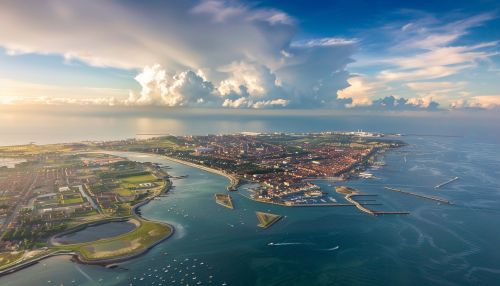Constantinople
History
Byzantium, the original name of Constantinople, was an ancient Greek city founded by King Byzas in 657 BC. The city was strategically located on the trade route between Europe and Asia, making it a significant commercial hub. In 330 AD, Roman Emperor Constantine the Great moved the capital of the Roman Empire from Rome to Byzantium, renaming it "Nova Roma", but the city came to be known as Constantinople, or "City of Constantine".


The city's strategic location made it a coveted prize for various empires. It was the capital of the Byzantine Empire for over a thousand years, during which it flourished as a center of culture, trade, and politics. The city's wealth and strategic importance led to numerous sieges, the most significant being the Fourth Crusade in 1204 and the Fall of Constantinople in 1453.
Architecture
Constantinople was renowned for its magnificent architecture. The most famous building is the Hagia Sophia, originally built as a cathedral in 537 AD during the reign of Justinian I. The city was also home to the Hippodrome, a large stadium used for chariot races, and the Great Palace of Constantinople, the imperial residence.
Culture
Constantinople was a melting pot of different cultures, with influences from Greek, Roman, and later Islamic cultures. The city was a center of learning, with the University of Constantinople being one of the oldest universities in the world. It was also a hub for the arts, with many famous works of literature, art, and music originating from the city.
Religion
Religion played a significant role in the life of Constantinople. Initially a center of Roman paganism, it became a significant Christian city following Constantine's conversion. The city was the seat of the Patriarch of Constantinople, one of the five patriarchs of the early Christian Church. Following the Ottoman conquest in 1453, the city became a center of Islam.
Economy
Constantinople's economy was primarily based on trade due to its strategic location. The city was a hub for the silk trade, with silk worms smuggled from China to the city in the 6th century. The city was also known for its artisans, producing goods such as textiles, jewelry, and ceramics.
Fall of Constantinople
The Fall of Constantinople in 1453 marked the end of the Byzantine Empire. The city was besieged by the Ottoman Empire under Mehmed the Conqueror. Following a 53-day siege, the city fell to the Ottomans, marking the end of the Middle Ages and the beginning of the Early Modern Period.
Ottoman Era and Modern Istanbul
Following the conquest, Constantinople became the capital of the Ottoman Empire, renamed Istanbul in 1930. The city continued to be a significant cultural, economic, and political center, with many of the Byzantine structures repurposed or rebuilt under Ottoman rule.
